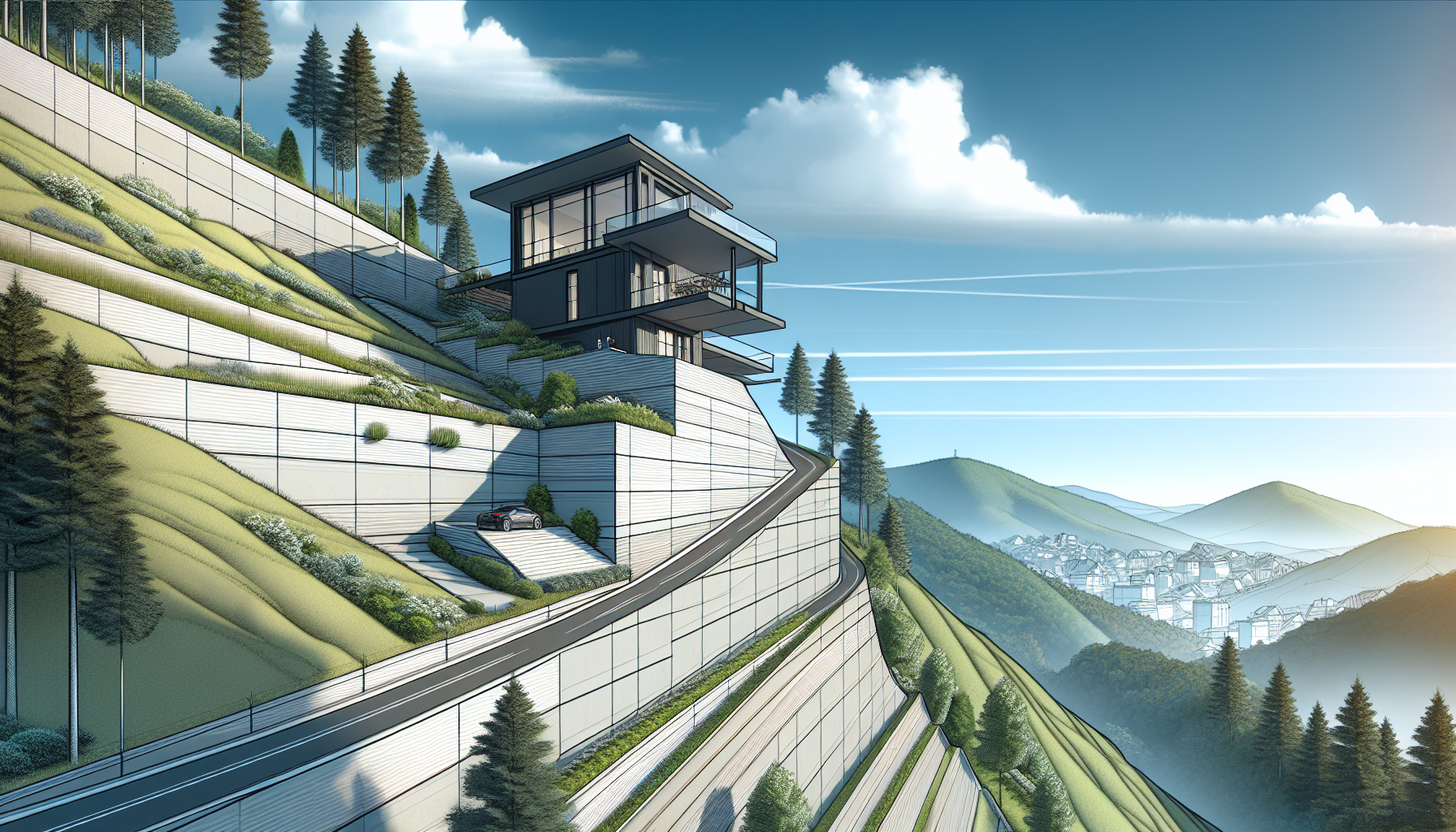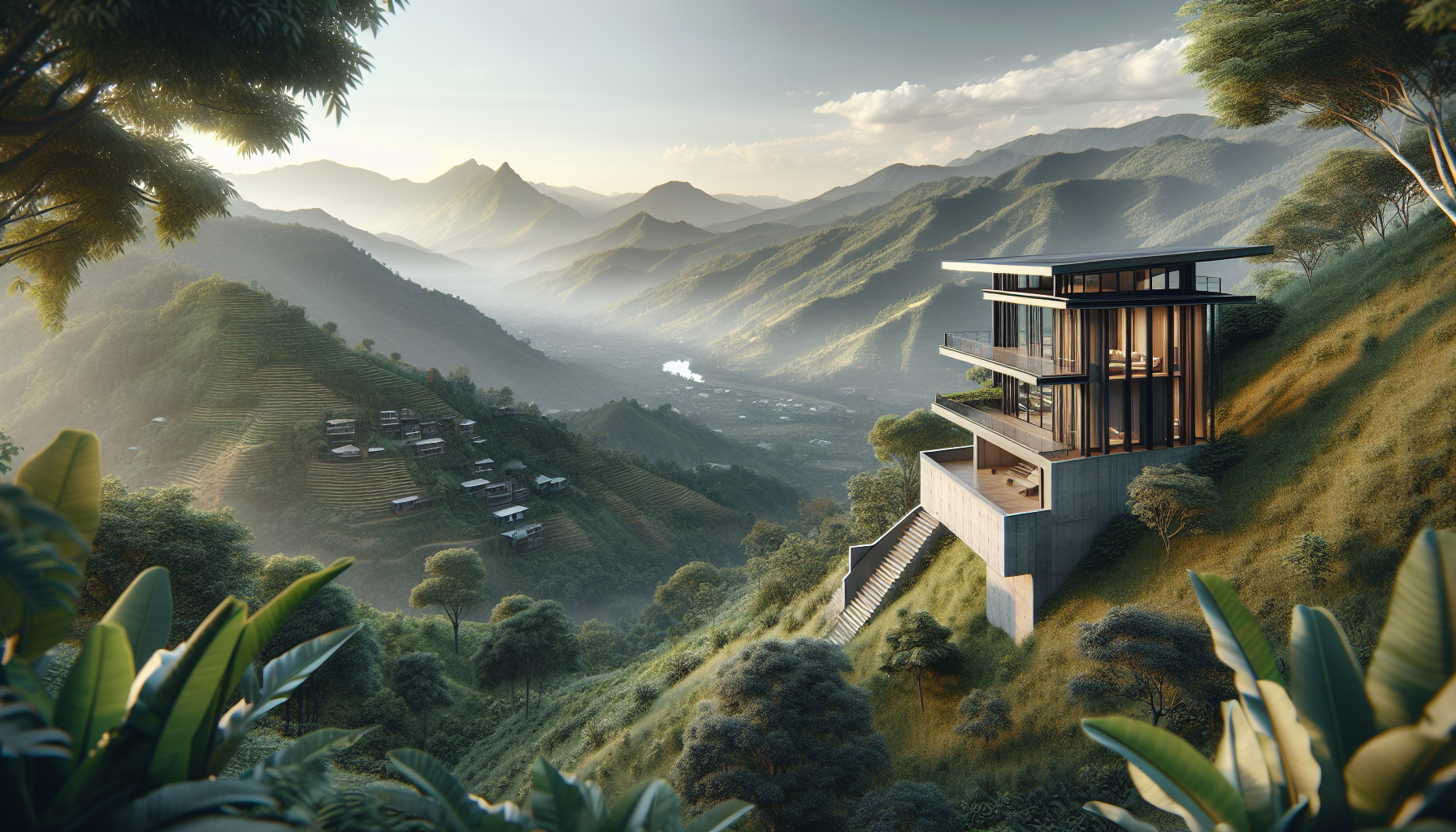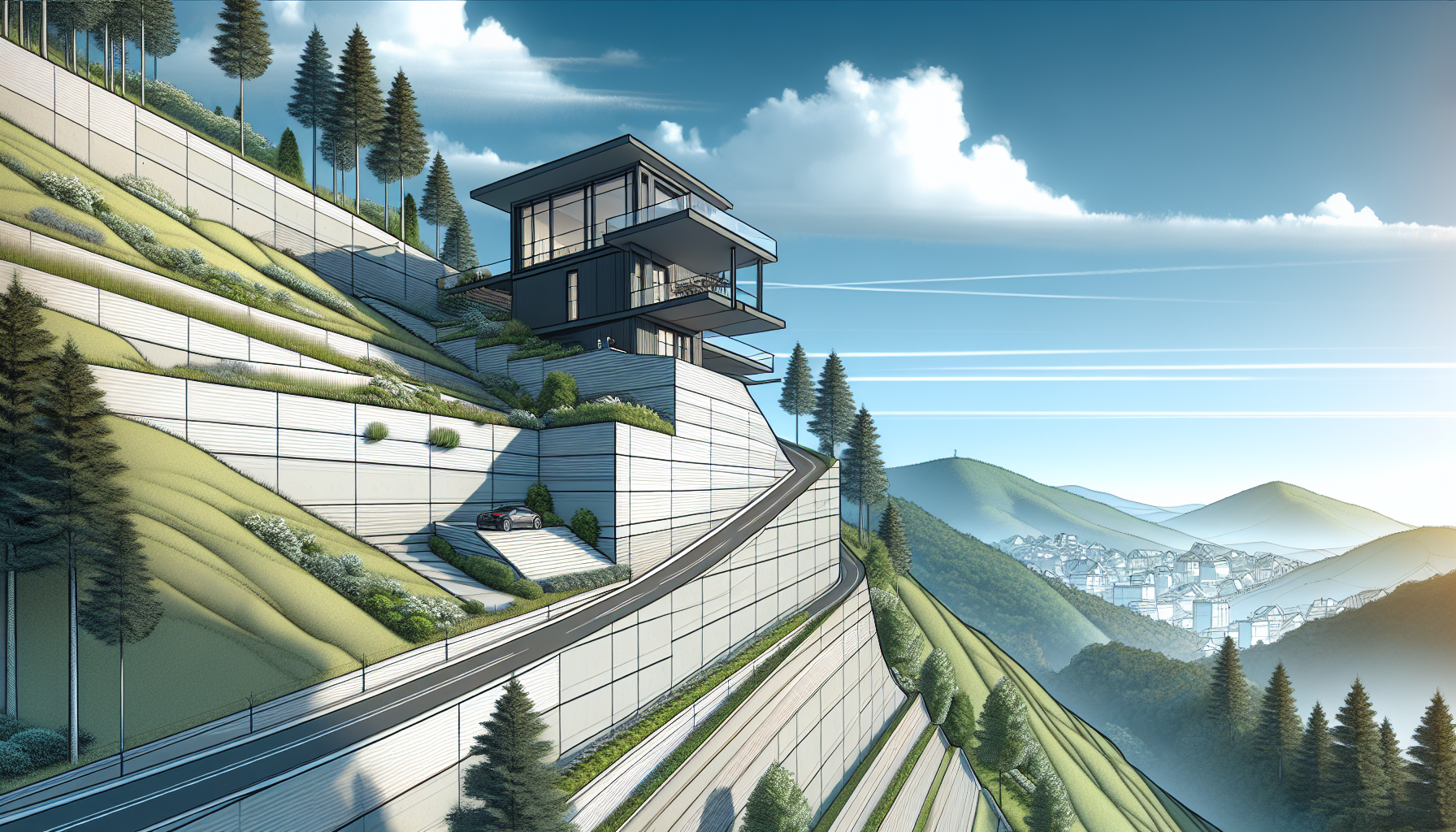Have you ever wondered about the challenges and possibilities of building a home on a sloped lot? Maybe you’ve seen stunning houses perched on hillsides and thought about the practicalities. Building on a slope can be exciting but requires careful consideration of various factors. Today, let’s look into the topic of building a house on a 25% slope, including the considerations, advantages, and potential challenges.

Understanding Your Neighborhood or Community
Imagine standing on the porch of your dream home, with the sun setting behind the mountains and the view stretching across the valley. Many neighborhoods feature properties on hills, offering breathtaking views. Some of the finest communities actively promote hillside living. This guide aims to help you understand the specifics of managing a slope like this one.
In areas like the suburbs of Phoenix, Arizona, homes sit nestled against natural landscapes. Scenic views characterize cities with rolling hills, mountains, or expansive desert landscapes. These properties provide unique aesthetics but can challenge builders and homeowners. It’s common to see houses designed to blend into the landscape while still providing modern comforts and safety. Before going into the practical nitty-gritty of slope building, it’s crucial to appreciate the beauty and advantages of these locations.
In these communities, the allure of nature meets urban conveniences, giving rise to a lifestyle filled with adventure. You may find hiking trails, biking routes, and parks close by. Such an environment fosters a sense of community and an appreciation for nature. However, this picturesque charm presents builders and homeowners with unique challenges. Properties on slopes, particularly those over 25%, require specific strategies for stability, safety, and design.
What Does a 25% Slope Mean?
When considering building a house on a slope, understanding what a 25% grade means is critical. A 25% slope essentially translates to a rise of 25 feet for every 100 feet of horizontal distance. You can visualize this as a diagonal line forming a triangle with the ground.
How to Measure a Slope
To measure slope, you can use basic tools or hire professionals:
- Visual Inspection: Stand at the bottom and look up. Get a sense of how steep the land looks.
- Level and Tape Measure: Place a level on the ground at the bottom of the slope and extend a tape measure 100 feet horizontally. Measure the vertical rise to see if it matches the 25-foot height.
- Professional Survey: Hiring a surveyor gives detailed and precise measurements. This is the best option for an accurate slope assessment.
Why Slope Matters
The slope affects drainage, foundation design, and building stability. A grade of 25% necessitates a robust design to ensure the home stays in place. Codes and regulations vary by area. Understanding these regulations is key to a successful building project.
Advantages of Building on a Slope
You might be curious about the upsides of building on a slope. There are some significant benefits to consider.
Stunning Views
Living on a slope, especially with a 25% grade, can ensure incredible panoramic views. These picturesque vistas often enhance daily life. You’ll enjoy sunrises and sunsets that are hard to match, making every day feel special.
Natural Drainage
Building on a slope allows for natural drainage of rainwater. The layout often prevents water from pooling around your foundation, minimizing the risk of water damage. This feature is a valuable safety aspect that helps maintain your home’s integrity over time.
Unique Architectural Possibilities
A slope encourages creative designs. You can incorporate multi-level designs that enhance both functionality and visual appeal. Open floor plans that capitalize on views and natural light become easier to implement in these settings.

Challenges of Building on a 25% Slope
Just as with advantages, there are hurdles to overcome with this kind of building site. Be aware of these challenges before proceeding.
Erosion Risks
Steep slopes are often susceptible to erosion. Heavy rains may wash away soil, threatening the home’s foundation. You might want to consider erosion control measures during construction, such as retaining walls or terracing.
Foundation Requirements
A sturdy foundation is crucial for homes on slopes. Engineers recommend specific designs, such as pier foundations, to account for the elevation. This ensures stability and safety for your house long-term.
Building Costs
Construction costs can rise on sloped lots. Specialized foundations, drainage systems, and excavation work can inflate your budget. It’s essential to plan for these additional expenses early on.
Building Techniques for Sloped Lots
If you’ve decided you’re ready to proceed, there are methods and techniques to handle the unique challenges presented by a 25% slope.
Retaining Walls
Retaining walls can help support the soil and prevent erosion. These structures allow you to create level areas for gardens, patios, or pathways. They provide both safety and utility, transforming challenging terrain into usable space.
Terracing
Terracing is an effective way to create flat areas on a slope. By cutting into the hill, you can build steps or small platforms. Each terrace can house gardens, seating areas, or various landscaping designs.
Pier Foundations
For higher slopes, consider pier foundations. These foundations lift the house off the ground, reducing grading and minimizing impact on the slope. This method provides better support and offers a unique aesthetic.
Regulations and Permits You Need to Consider
Before you begin any construction, there are regulations you must follow. Local laws can affect your building plans and may include zoning, building codes, and environmental regulations.
Check Local Zoning Laws
Zoning laws dictate what can be built in specific areas. Confirm that your property is zoned for residential use. Local authorities may also have restrictions on building height, size, and style.
Environmental Regulations
If your property has beautiful natural features—trees, streams, or wildlife—local environmental guidelines may apply. You may need permits before doing any construction work, especially if these features could be damaged.
Building Codes
Building codes outline the standards for construction and may include foundation requirements for slopes. Familiarizing yourself with these codes can help you avoid future headaches.
Hiring the Right Team
With a project this significant, you should not go it alone. Finding the right team to assist you is essential. Look for professionals experienced in building on slopes.
Architects and Designers
Choose architects and designers familiar with sloped lots. They can create blueprints that work with the slope instead of against it. This will ensure your home is both beautiful and functional.
Contractors
Select contractors who have experience with hillside builds. These experts know the additional requirements, techniques, and materials you will need for a successful project.
Engineers
Hiring a structural engineer is vital for slope building. They can design a foundation that fits your land’s specifications, BSiding you with safe and secure plans.
Budgeting for Your Sloped Home
Understanding how much your dream home will cost is critical to avoid stress later. A budget sets clear expectations and allows for the unique elements that building on a slope may require.
Initial Costs
Start by estimating initial costs, including land purchase and any site preparation needed. Add the costs of retaining walls or drainage systems if necessary.
Construction Costs
Building on a slope will likely increase construction costs. Be prepared for additional expenses due to specialized equipment and materials.
Long-Term Maintenance
Consider ongoing costs, such as landscaping and erosion control. Effective planning helps set a sustainable financial path for years to come.
Conclusion
You’ve learned quite a bit about building on a 25% slope. While challenges exist, there are also many benefits, such as stunning views and unique designs. Being well-informed lets you appreciate the opportunities while preparing for potential obstacles.
Building a home is a big step, especially on a slope, and it’s essential to approach this with caution and care. If you find yourself needing assistance, remember Xclusive Home Services is ready to help with various home services, including roofing, ensuring your home stays safe and well-maintained.
Contact Xclusive Home Services
For all your roofing needs, look no further than Xclusive Home Services. Contact them to ensure your home is equipped with the best.
- Address: 14505 N. Hayden Rd., Ste. 101, Scottsdale, AZ 85260
- Phone: (602) 341-5545
- Email: management@xclusivehomeservicesco.com
Building a home on a slope can be one of the most rewarding decisions you make, allowing you to enjoy panoramic views and unique architectural designs. With the right team and careful planning, your hillside dream could become a beautiful reality.


